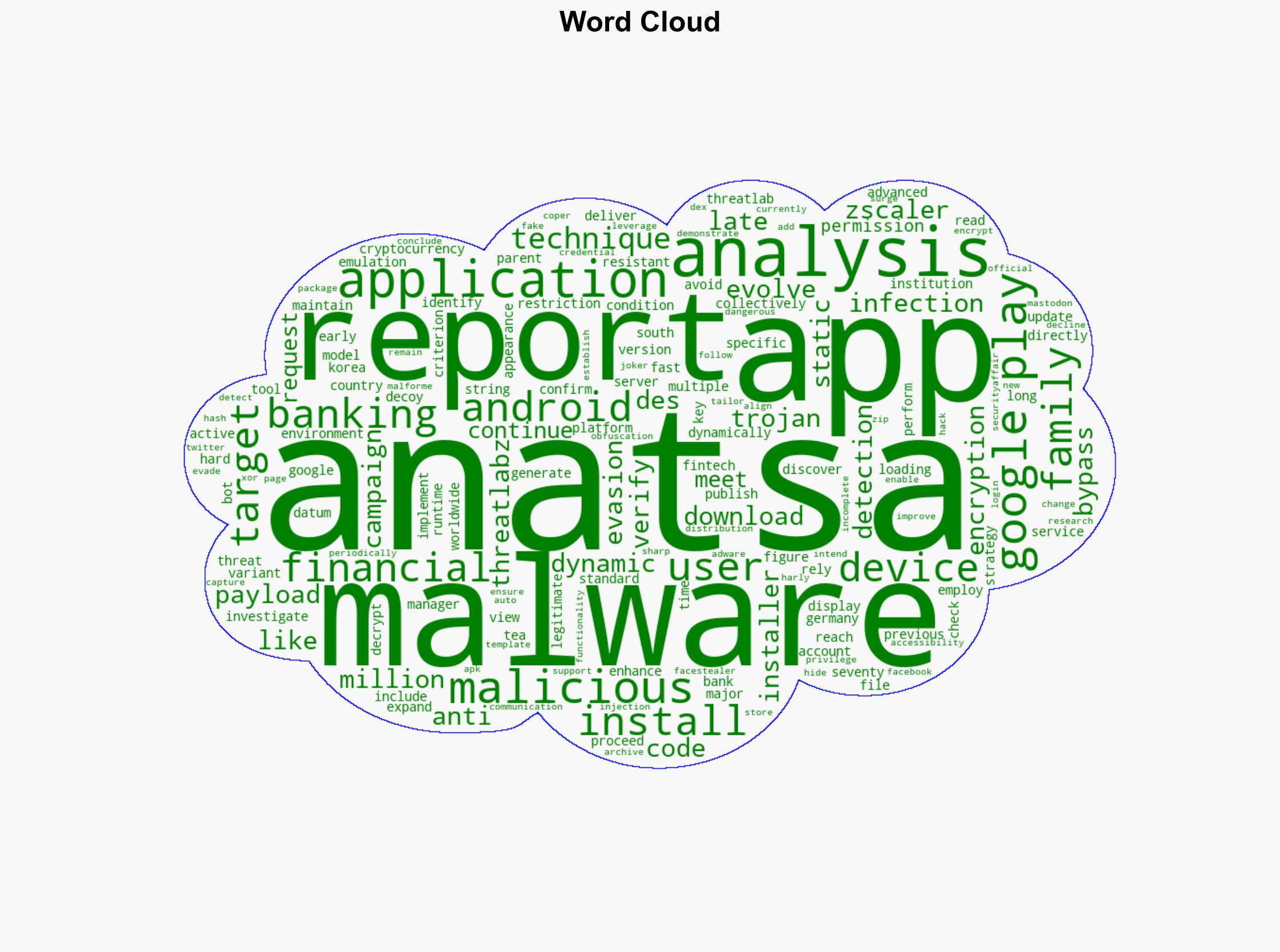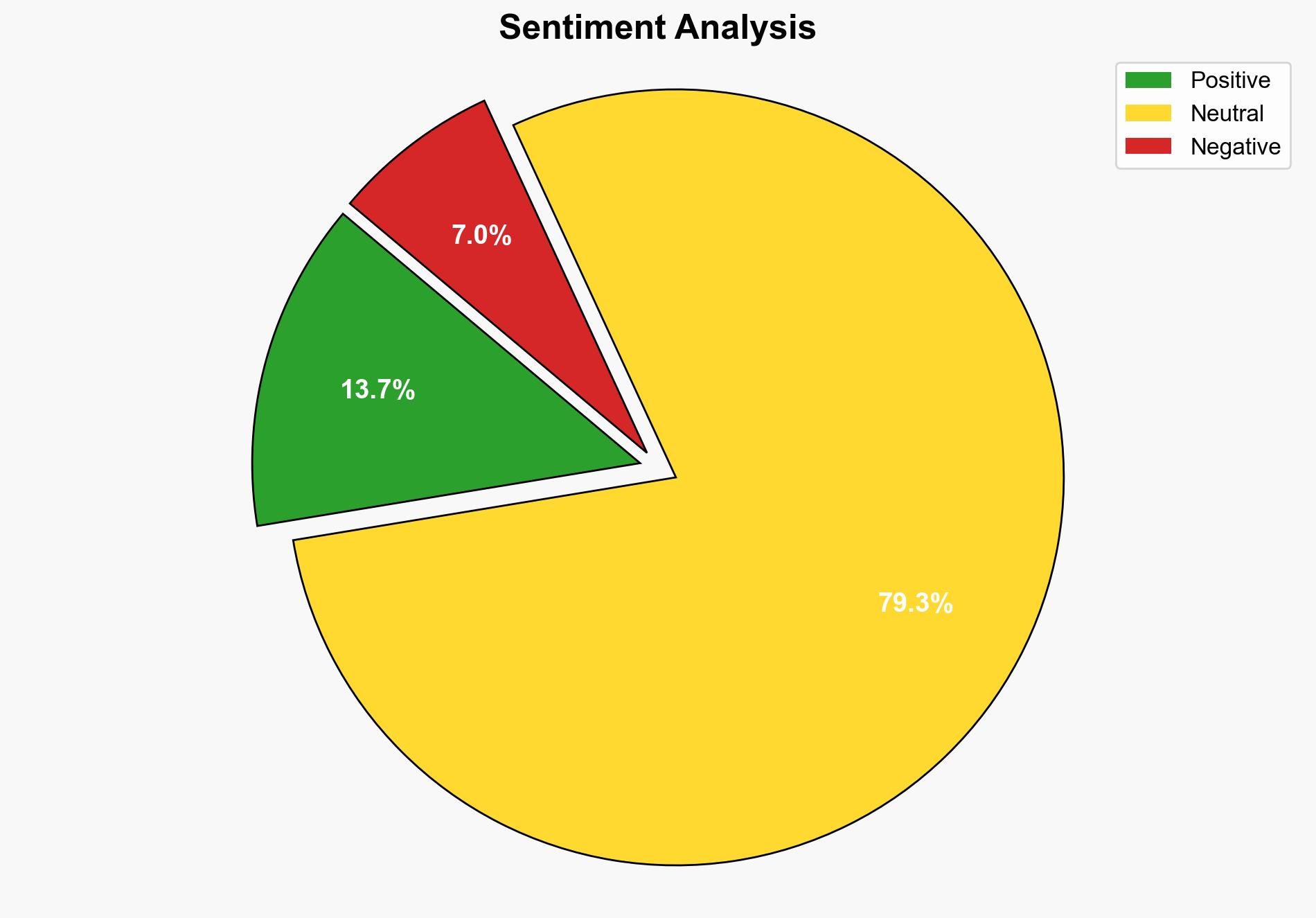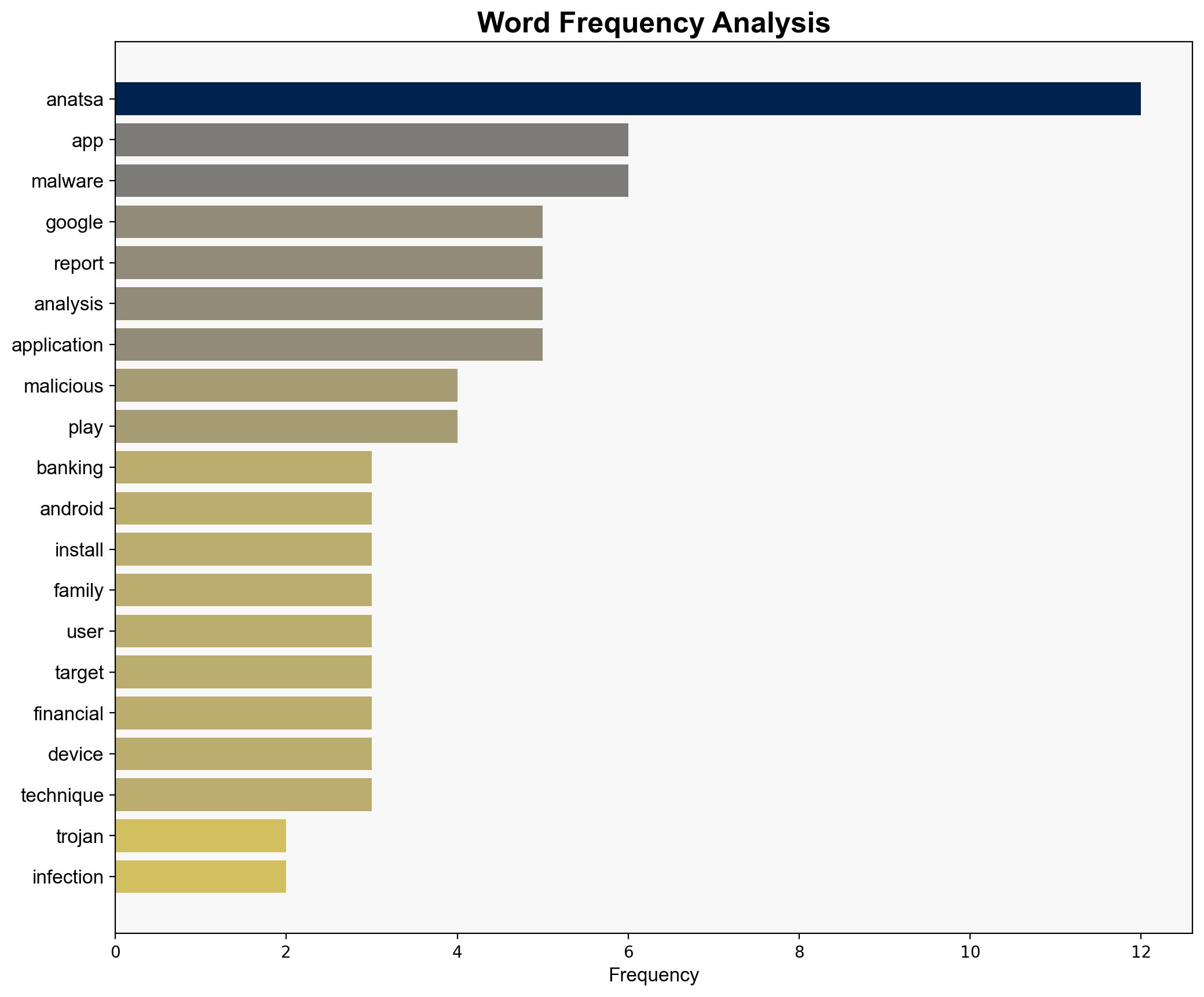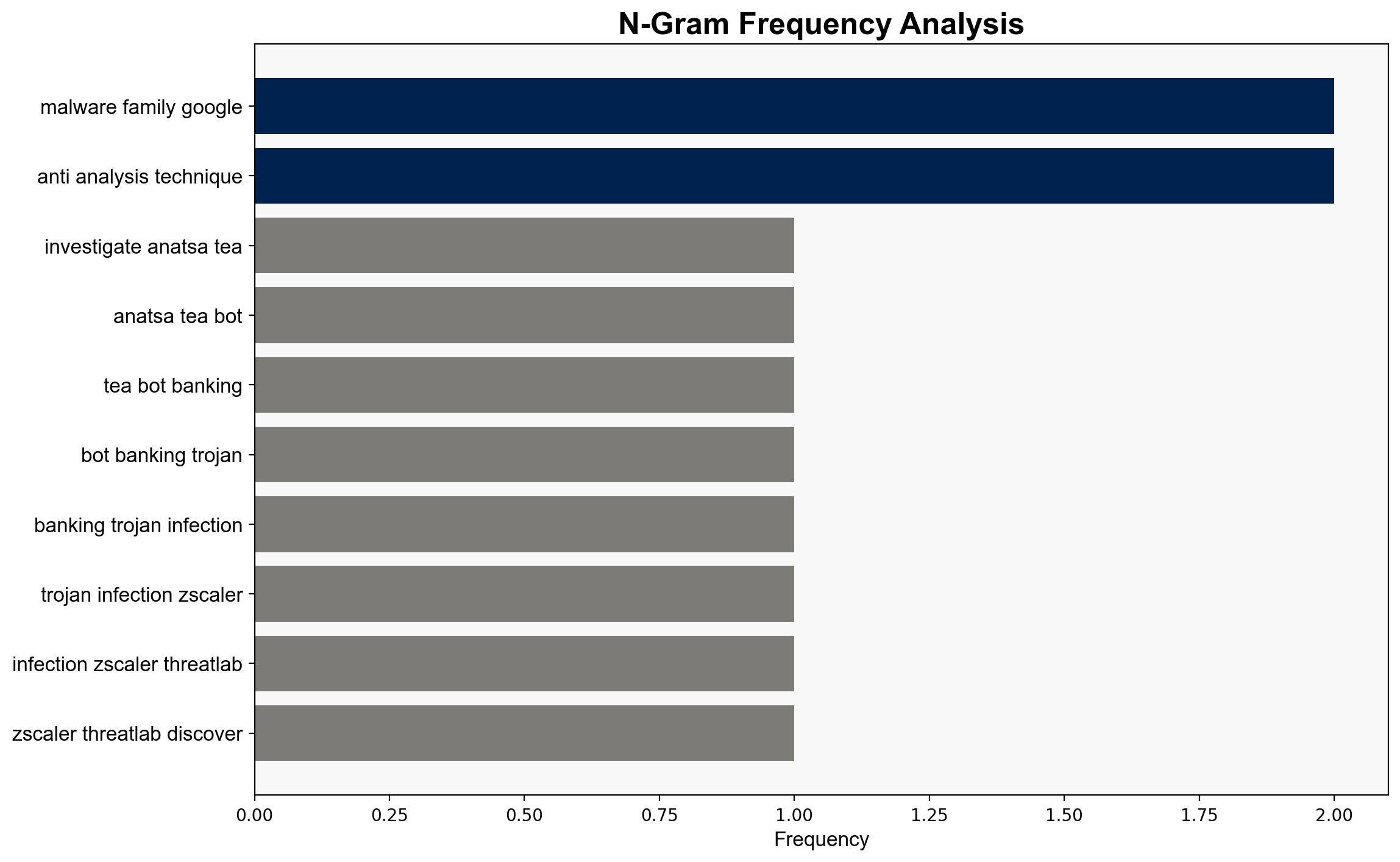Malicious apps with 19M installs removed from Google Play because spreading Anatsa banking trojan and other malware – Securityaffairs.com
Published on: 2025-08-25
Intelligence Report: Malicious apps with 19M installs removed from Google Play because spreading Anatsa banking trojan and other malware – Securityaffairs.com
1. BLUF (Bottom Line Up Front)
The Anatsa banking trojan represents a significant and evolving threat to financial institutions and users worldwide, with its advanced evasion techniques and widespread distribution via Google Play. The most supported hypothesis is that the Anatsa malware family is leveraging official app stores to maximize reach and effectiveness, posing a persistent threat to cybersecurity. Confidence level: High. Recommended action: Enhance app vetting processes and user awareness campaigns on app permissions and security.
2. Competing Hypotheses
Hypothesis 1: The Anatsa malware family primarily targets financial institutions and users by exploiting vulnerabilities in the Google Play Store’s app vetting process, using advanced evasion techniques to bypass detection and maximize infection rates.
Hypothesis 2: The Anatsa malware’s presence on Google Play is part of a broader, coordinated cyber campaign aimed at destabilizing financial systems and gaining unauthorized access to sensitive financial data, potentially involving state-sponsored actors.
3. Key Assumptions and Red Flags
Assumptions:
– The Google Play Store’s security measures are insufficient to detect and prevent the distribution of sophisticated malware like Anatsa.
– Anatsa’s developers have the technical capability to continuously adapt and enhance evasion techniques.
Red Flags:
– Lack of specific attribution to state-sponsored actors or organized cybercriminal groups.
– Incomplete data on the full scope of financial institutions and countries targeted.
4. Implications and Strategic Risks
The continued evolution of Anatsa poses a direct threat to global financial stability, with potential economic repercussions if major financial institutions are compromised. The malware’s ability to evade detection could inspire similar tactics among other cybercriminal entities, escalating the cybersecurity arms race. Geopolitically, if state-sponsored involvement is confirmed, it could lead to increased tensions and retaliatory cyber actions.
5. Recommendations and Outlook
- Enhance app vetting and monitoring processes on official app stores to detect and prevent malware distribution.
- Conduct user education campaigns to raise awareness of app permissions and security practices.
- Scenario Projections:
- Best Case: Improved detection and prevention measures significantly reduce malware distribution via official app stores.
- Worst Case: Anatsa evolves further, leading to widespread financial data breaches and economic disruption.
- Most Likely: Continued cat-and-mouse game between malware developers and cybersecurity measures, with periodic successes in malware distribution.
6. Key Individuals and Entities
No specific individuals are mentioned in the source intelligence. Entities involved include Google Play, Zscaler’s ThreatLabZ, and financial institutions targeted by Anatsa.
7. Thematic Tags
national security threats, cybersecurity, financial stability, malware evolution, app store security




